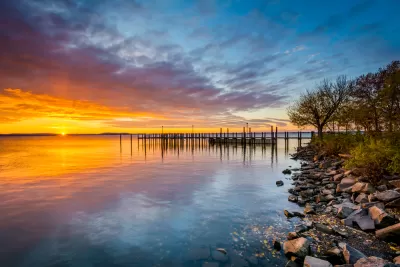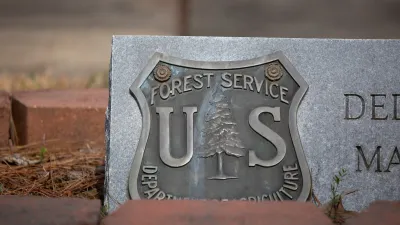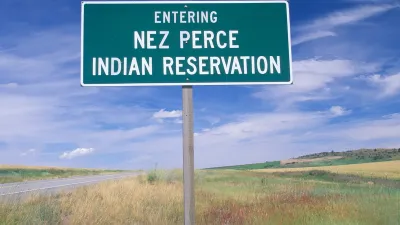Two Maryland lawmakers will introduce legislation to create the Chesapeake Bay National Recreation Area to protect the region’s important ecological and cultural resources.

The Chesapeake Bay, known as “the gateway for European explorers who established the first permanent English-speaking colony in North America at Jamestown” and one of the country’s most important landscapes, could soon be designated as a national recreation area, opening up federal funding sources for protecting the bay and improving public access to the watershed. Fredrick Kunkle describes the proposed legislation, the result of years of activism and coordination by dozens of organizations, in the Washington Post.
“Among other things, the group wanted to ensure that the effort would highlight the bay’s connection to Indigenous peoples and previously marginalized histories such as the impact and legacy of slavery,” Kunkle explains. “They also said that listing the bay as a national recreation area would not lead to tighter regulations or restrictions on commercial activity or recreation, but could instead help to promote tourism and the area’s commercial prospects.”
According to the article, “the proposal builds on the Chesapeake Bay Gateways and Watertrails Network that’s been in place since 2000,” which aims to connect hundreds of historically, ecologically, and culturally important sites. Under the proposal, “The National Park Service would assume more authority over the area but would not supersede state powers. The Park Service would, however, be able to identify and absorb additional properties into the park on a voluntary basis or enter into agreements to jointly manage sites belonging to states, local jurisdictions or nonprofits.”
FULL STORY: Chesapeake Bay could become national recreation area

Study: Maui’s Plan to Convert Vacation Rentals to Long-Term Housing Could Cause Nearly $1 Billion Economic Loss
The plan would reduce visitor accommodation by 25,% resulting in 1,900 jobs lost.

North Texas Transit Leaders Tout Benefits of TOD for Growing Region
At a summit focused on transit-oriented development, policymakers discussed how North Texas’ expanded light rail system can serve as a tool for economic growth.

Why Should We Subsidize Public Transportation?
Many public transit agencies face financial stress due to rising costs, declining fare revenue, and declining subsidies. Transit advocates must provide a strong business case for increasing public transit funding.

How Community Science Connects People, Parks, and Biodiversity
Community science engages people of all backgrounds in documenting local biodiversity, strengthening connections to nature, and contributing to global efforts like the City Nature Challenge to build a more inclusive and resilient future.

Alabama: Trump Terminates Settlements for Black Communities Harmed By Raw Sewage
Trump deemed the landmark civil rights agreement “illegal DEI and environmental justice policy.”

Dear Tesla Driver: “It’s not You, It’s Him.”
Amidst a booming bumper sticker industry, one writer offers solace to those asking, “Does this car make me look fascist?”
Urban Design for Planners 1: Software Tools
This six-course series explores essential urban design concepts using open source software and equips planners with the tools they need to participate fully in the urban design process.
Planning for Universal Design
Learn the tools for implementing Universal Design in planning regulations.
City of Santa Clarita
Ascent Environmental
Institute for Housing and Urban Development Studies (IHS)
City of Grandview
Harvard GSD Executive Education
Toledo-Lucas County Plan Commissions
Salt Lake City
NYU Wagner Graduate School of Public Service





























